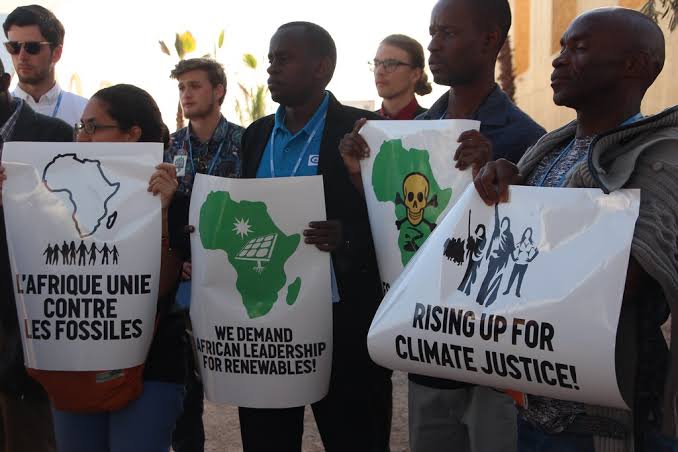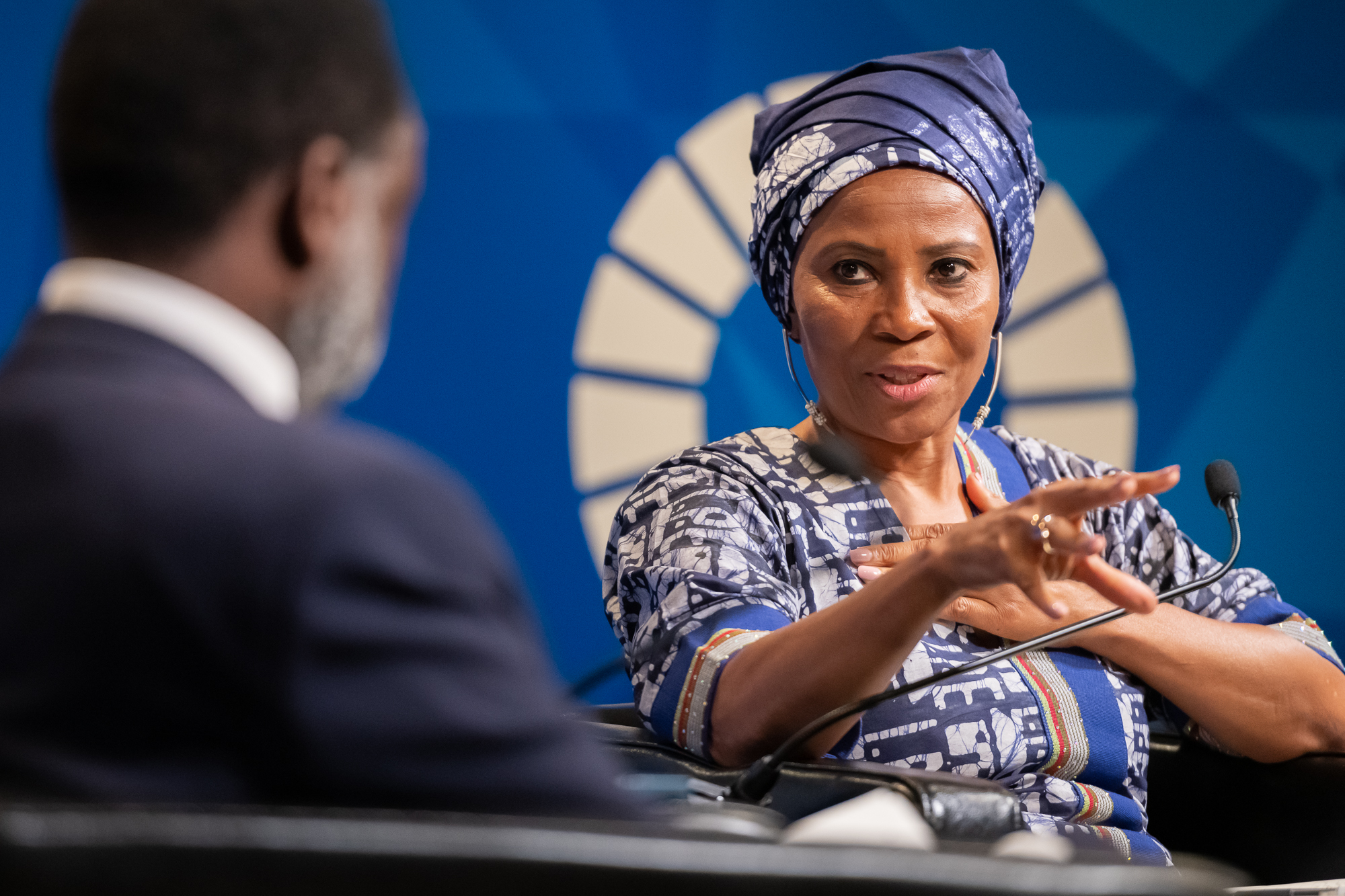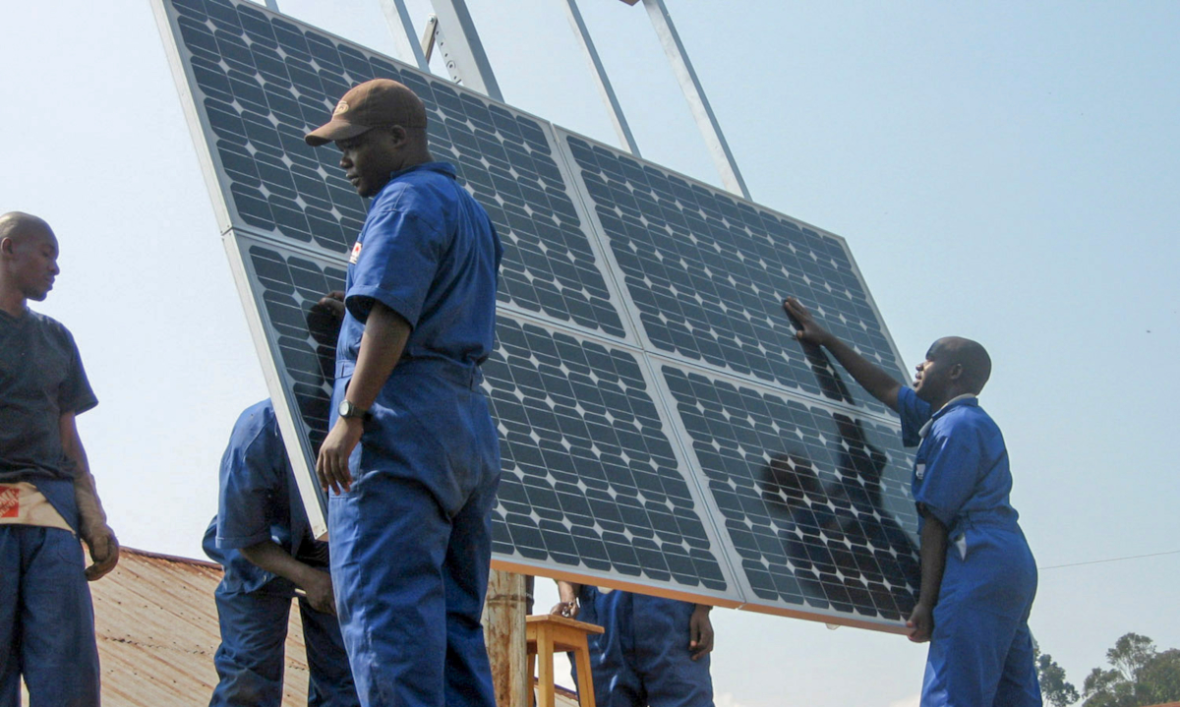Africa's Green Energy Transition
A Pragmatism vs. Idealism Debate
By Bomi Fagbemi
INTRODUCTION
Africa stands at a pivotal moment in its energy journey. With over 600 million people still lacking access to electricity and economies hungry for reliable power to drive industrialisation—the continent’s energy choices will shape its future for decades.
Renewable energy is often seen as a magic bullet to solve Africa’s energy needs. Calls to meet up with greenhouse gas reduction targets and other policies have ramped up investment in these resources. However, despite the clear energy deficit, there is a dilemma. Africa is responsible for only 4% of global GHG emissions and is in dire need of industrialisation. These targets appear to be conflicting. The financial deficit is huge, and relying only on renewable energy to foster development appears not very pragmatic, especially in African countries whose economies depend on fossil fuels.

(Photo by John Englart)
THE CASE FOR IDEALISM: A RENEWABLES-ONLY FUTURE
Africa has the potential to leapfrog traditional fossil fuel development and become a global leader in clean energy. The continent is blessed with abundant solar, wind, hydro and geothermal resources. Yet, only a small fraction of this potential has been harnessed; for instance, Africa has 60% of the best solar resources globally, but only 1% of installed solar PV capacity. The continent’s geothermal resources also remain largely dormant outside of pioneering projects in Kenya.
Idealists argue that this underutilization is not just an environmental oversight but a missed economic revolution. Renewables are increasingly cost-competitive but also modular and scalable, making them uniquely suited to Africa’s geography and settlement patterns. Decentralised solutions like off-grid solar have already proven their utility, electrifying communities far from the reach of traditional grids.
Idealists also see renewables as a shield against external shocks. Africa’s dependence on imported fossil fuels exposes economies to volatile global prices; renewables, by contrast, offer energy sovereignty and price stability. In a world where Africa is responsible for less than 4% of global GHG emissions, a leapfrog to clean energy is also a powerful statement of climate justice and leadership.
What is also often overlooked is that renewables can also drive industrialisation, not just rural electrification. With strategic investment, Africa could become a global exporter of green hydrogen, batteries and other clean technologies, leveraging its resource wealth for value-added manufacturing rather than raw exports. In this vision, the energy transition is not just about decarbonization, but about building a modern, resilient and inclusive African economy.

Ahunna Eziakonwa, Assistant Administrator and Regional Director for Africa at UNDP discussing renewable energy. (Source: UNDP Regional Bureau for Africa)
THE CASE FOR PRAGMATISM: STICKING TO THE STATUS QUO
The pragmatist perspective acknowledges Africa’s renewable bounty but insists that the path to a sustainable energy future must be grounded in the continent’s complex realities. Legacy infrastructure, fiscal constraints and the urgent need for industrialisation and poverty reduction shape Africa’s energy systems. Today, fossil fuels still account for over 80% of Africa’s primary energy supply, and many economies remain heavily dependent on oil and gas revenues for government budgets and foreign exchange. Industrial growth demands reliable, dispatchable power—something renewables alone cannot yet guarantee due to intermittency and storage limitations. The intermittency challenge is substantial: solar power generation ceases at night and diminishes during cloudy weather, while wind generation fluctuates based on weather patterns. Battery storage technologies are advancing rapidly, but still face constraints in African contexts. Current utility-scale battery systems typically provide 4-8 hours of storage at commercially viable costs, insufficient for multi-day weather events or seasonal variations.
Pragmatism isn't business as usual, but rather a strategic deployment of transitional fuels with clear endpoints. Natural gas, in particular, presents a bridge—it produces roughly half the emissions of coal when generating electricity and can provide the reliable baseload power that industries require. Countries like Mozambique, Tanzania and Nigeria argue that developing their substantial gas reserves isn't hypocrisy but energy realism with proper guardrails: investments should include sunset clauses that establish timelines for eventual phase-out, technology transfer provisions to build local capacity and requirements that gas infrastructure be hydrogen-compatible for future conversion. Such planned transitions preserve sovereignty while acknowledging climate imperatives.
The ability of African nations to determine their energy futures represents the cornerstone of pragmatic approaches. This sovereignty encompasses multiple dimensions: resource control (who owns and profits from energy assets), technological autonomy (the capacity to maintain, adapt and innovate without perpetual dependence on external expertise) and decision-making authority (freedom from external policy dictates). When international financing comes with prescriptive conditions about acceptable energy sources, it fundamentally undermines this sovereignty. African leaders increasingly challenge this dynamic, noting the hypocrisy of developed nations that industrialised using fossil fuels now seek to restrict Africa's options while offering insufficient financial alternatives. True sovereignty requires building homegrown technical expertise and manufacturing capacity for energy technologies, not merely possessing natural resources.
Moreover, the transition must be just and inclusive. Over 600 million Africans still lack access to electricity, and abrupt policy shifts risk deepening energy poverty or triggering social unrest. The African Union’s common position is clear: Africa will continue to deploy all forms of its abundant energy resources to meet its development needs.
REALITIES ON THE GROUND: DATA, TRADE-OFFS AND LOCAL EXPENSES
Africa's energy transition faces several critical challenges. First, infrastructure constraints limit renewable integration—grid losses average 16% continent-wide versus 9% globally, while Nigeria distributes only 5GW despite 13GW installed capacity. Second, financing remains prohibitive, with interest rates 2-3 times higher than in more developed markets, increasing project costs. Third, local priorities focus on reliability, not emissions.
Case studies across Africa reveal persistent implementation challenges that underscore the need for pragmatic, sequenced reforms. In Kenya, the Lake Turkana Wind Power project–Africa’s largest wind farm–faced over a year of costly delays before its transmission line was completed, limiting the project’s impact despite its impressive scale. Meanwhile, South Africa continues to experience load-shedding in 2025, as Eskom’s operational setbacks and grid constraints persist despite increased renewable generation. These realities highlight that adding renewables alone is insufficient; coordinated investment in grid infrastructure, skilled operations and regulatory reform is essential for reliable, sustainable progress.
REGULATORY HURDLES: ELIGIBILITY CRITERIA AS DOUBLE-EDGED SWORDS
As highlighted by CrossBoundary Energy, eligibility criteria for Distributed Energy Resources (DERs) such as caps on solar self-generation or minimum demand thresholds, shape the pace and inclusivity of Africa’s energy transition. While some rules, like Uganda’s 30% cap or Tanzania’s 2 MW minimum, are intended to manage technical risks and safeguard utility revenues; excessively restrictive or ambiguous criteria, such as Senegal’s 50 MW minimum for DERs, can stifle innovation, exclude small and medium enterprises or delay progress. Well-designed, transparent, and regularly reviewed criteria can support both grid stability and market growth, but when misapplied, they risk becoming barriers to the very transition they are meant to enable.
The lesson: Regulation must evolve from barrier to bridge. Adaptive frameworks that allow phased DER integration, regular review of criteria and off-grid exemptions (as in Namibia) can accelerate electrification without destabilising utilities.
FINANCING THE TRANSITION: THE CENTRAL CHALLENGE
Financial constraints are perhaps the most formidable barrier. Despite favourable economics for renewables, the cost of capital for clean energy projects in Africa is two to three times higher than in advanced economies, and public finances are stretched thin by debt and competing priorities. Private investors are deterred by high risks, regulatory uncertainty and payment delays from state-owned utilities. The financial gap is massive–Africa requires $200 billion annually to meet energy transition targets in 2030, but attracts only 2-3% of global renewable investments, which is far below what is needed to meet its development and climate goals.
Debt-for-climate swaps offer a promising, though not a panacea, solution: countries can negotiate debt relief in exchange for commitments to invest in climate-friendly projects like renewables, grid upgrades or local manufacturing. However, these swaps must be transparent, targeted and linked to robust governance to avoid greenwashing or misallocation of funds.
Blended finance, concessional loans and innovative project de-risking are also essential to crowd in private capital and ensure bankable projects reach scale.
LOCAL REALITIES: ECONOMIC OPPORTUNITY DRIVES ACCEPTANCE
Communities and businesses prioritise reliable, affordable power and local economic benefits over environmental concerns. However, policy decisions can have rapid, direct effects on energy consumption behaviour. For example, Nigeria’s recent subsidy reforms have made solar and electric mobility more attractive to both investors and consumers as they are now much cheaper compared to fossil fuels. Framing renewables as an economic solution and not just an environmental imperative builds broader buy-in and support.

(Source: Creative Commons)
Policy Recommendations: A Roadmap for Africa’s Energy Transition
- Develop Integrated, Country-Specific Energy Transition Plans. Set clear, time-bound targets for renewables, transitional fuels and grid upgrades, tailored to each country’s context and resources.
- Accelerate Distributed Renewable Energy Deployment. Reform regulations to enable private investment in mini-grids, off-grid solar and pay-as-you-go models. Avoid restrictive eligibility criteria that exclude SMEs and communities.
- Leverage Transitional Fuels with Clear Sunset Clauses. Where necessary, use natural gas or other transitional fuels to support industrial growth and grid reliability, but set timelines and incentives for a gradual phase-out as renewables and storage become more viable.
- Modernise Grids and Expand Regional Interconnection. Invest in smart grids, metering and cross-border power pools to integrate higher shares of variable renewables and enhance reliability.
- Anchor the Transition in Economic Opportunity. Link renewable energy policies to industrial strategies, local manufacturing and job creation. Provide incentives for local content and skills development. Don’t just invest in clean energy—invest in clean entrepreneurs. Support local startups building solar mini-grids, e-mobility services and battery recycling ecosystems. Loan guarantees, equity capital and local manufacturing incentives can turn policy into prosperity
- Innovate Financing: Debt-for-Climate Swaps and Blended Finance. Pursue debt-for-climate swaps with transparency and strong governance, targeting high-impact sectors like DER and grid upgrades. Combine with concessional finance and risk mitigation tools to attract private investment.
- Adopt Adaptive, Transparent Regulatory Frameworks. Regularly review and adjust DER eligibility criteria and other regulations to reflect market maturity and grid readiness. Use staged approaches to balance utility stability with innovation.
CONCLUSION: A NUANCED APPROACH
Africa’s energy transition cannot be a binary choice between idealism and pragmatism. While renewables offer immense potential, the continent must balance ambition with reality: phased gas use, regulatory agility and financing innovation. By framing renewables as engines of job creation and industrial growth and not just climate solutions, Africa can build political and public buy-in. The path forward requires billions annually in blended finance, adaptive policies and global partnerships that prioritise Africa’s development equity. As the DRC’s debt swaps and Kenya’s geothermal surge show, pragmatic idealism can light the way. Progress is also highly uneven: countries like Morocco and Egypt have achieved nearly 100% electricity access, while others, such as Burundi and the DRC, remain below 25%. These stark contrasts highlight the need for tailored strategies, as Africa’s energy transition must bridge wide gaps in access and capacity across the continent.
Bomi Fagbemi is a recurring author at The Africa Center and an entrepreneur driving Africa’s green transition. Recognized as part of the New York Times’ Climate Innovator Initiative at COP 26, he is currently building and supporting early-stage startups in renewable energy, e-mobility, and sustainable agriculture in Africa.
Editor: Temi Ibirogba
This article is part of The Africa Center’s Policy Positions series, the recurring publications will offer thoughtful engagement with contemporary policy and governance issues related to the African continent. Policy Positions are submitted by members of The Africa Center’s community of thought leaders from across Africa and the African Diaspora. Follow @theafricacenter on Twitter, Instagram and LinkedIn to stay informed of new posts, and reach out to the editor to submit an idea for consideration.
